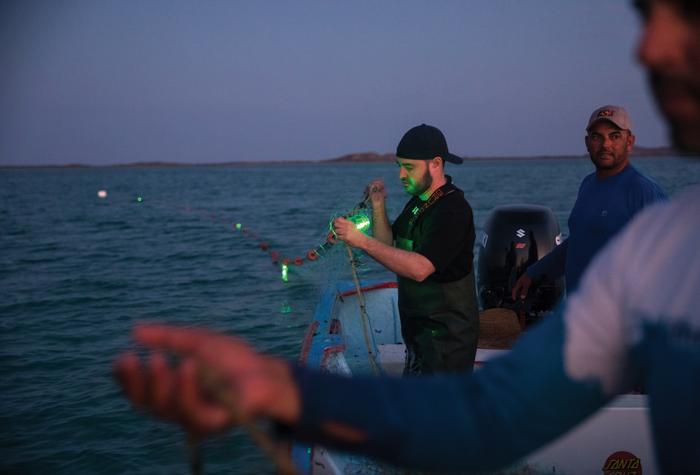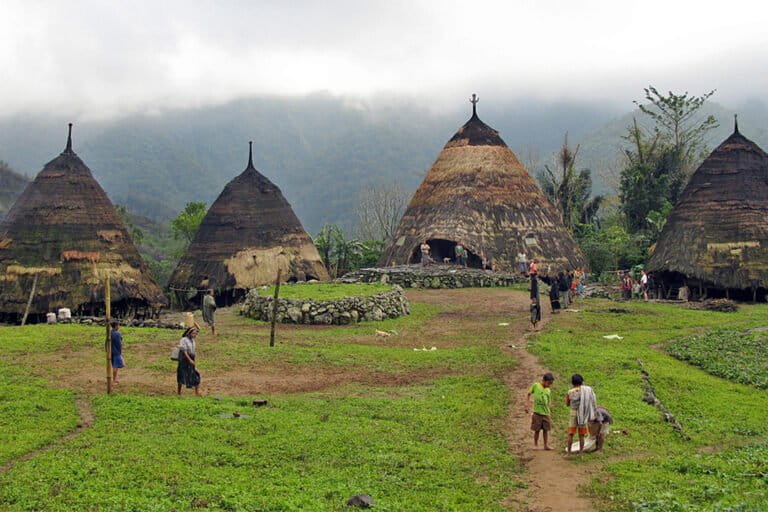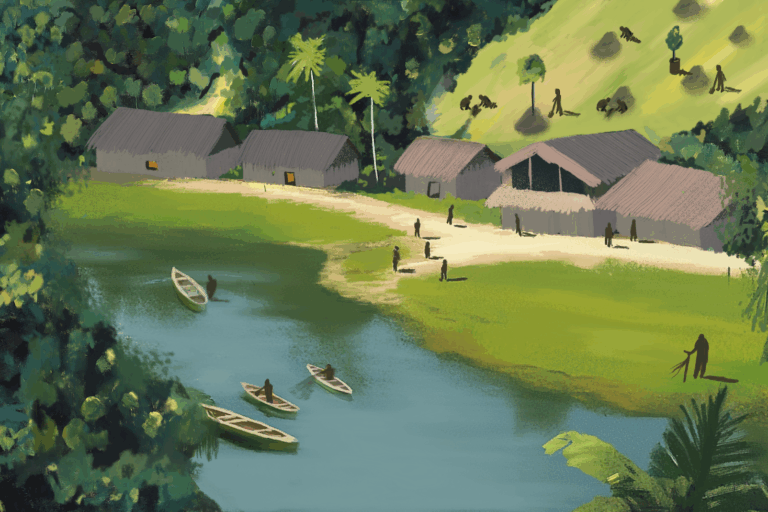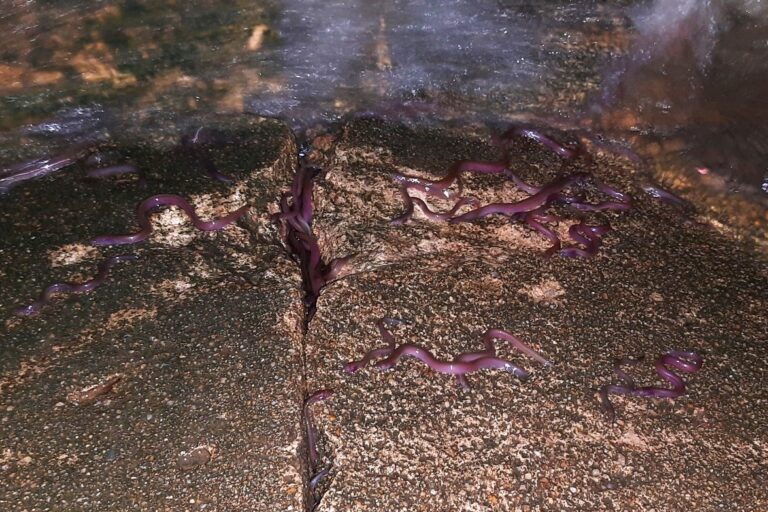- As few as 14 critically endangered Irrawaddy dolphins remain in the world’s smallest freshwater population of the species, in southern Thailand’s Songkhla Lake.
- The recent death of one of the remaining few raised the alarm among cetacean specialists, who say more must be done to save the imperiled population.
- Teetering on the brink of extinction, the dolphins face a slew of threats from entanglement in fishing nets, depletion of fish populations, and deteriorating lake conditions due to increasing pressures from agriculture, industry and infrastructure development.
- Experts say a “once-in-a-lifetime” opportunity to reverse the dolphin’s trajectory of decline is on the horizon in the form of major funding for dolphin conservation linked to a road bridge megaproject, but they warn it will only be successful if government agencies can put aside their competing agendas.
The recent death of a critically endangered freshwater Irrawaddy dolphin in southern Thailand’s Songkhla Lake has brought the plight of the waterbody’s tiny remaining population into stark focus. As few as 14 of the dolphins, Orcaella brevirostris, are thought to survive in the lake amid a slew of threats ranging from entanglement in fishing gear and depletion of their fish prey population, to deterioration of their habitat due to pollution and runoff from intensively developed surrounding land.
Fishers found the adult dolphin body floating in the lake on Feb. 18. It was the first recorded fatality in three years within the imperiled population. Although authorities performed a necropsy to investigate the cause of death, the coroner’s report was inconclusive, citing no evidence of injuries from fishing nets and very few prey items in the animal’s stomach.
“We don’t have any evidence that the death is related to fishery activity,” Thon Thamrongnawasawat, a marine ecologist and lecturer at Kasetsart University in Bangkok, told Mongabay. He added, however, that external bruising indicated there could have been some trauma to the body: “The veterinary assessment said it might have been fighting among the group — sometimes the big males try to eliminate the younger ones.”
Cetacean experts say that without swift action to safeguard the remaining animals, Thailand risks losing this small but internationally significant group of dolphins that represent one of only five freshwater populations of the species worldwide. With so few individuals remaining, each fatality pushes the population inexorably closer to extinction.
But hope is on the horizon, according to Thon, who also chairs the Thai government’s working group on the dolphin population. He said major funding linked to a World Bank-funded infrastructure project in the southern part of the lake will enable government agencies and conservation groups to reverse the dolphins’ trajectory of decline through innovative monitoring programs and threat-reduction initiatives.

A population most at risk
Found in both freshwater and marine environments across South and Southeast Asia, Irrawaddy dolphins are classified as globally endangered by the IUCN, but each of the species’ five freshwater populations is categorized as critically endangered. Fewer than 90 dolphins remain in three major river systems: the Irrawaddy in Myanmar, the Mahakam in Indonesian Borneo, and Cambodia’s stretch of the Mekong. Meanwhile, a further population in India’s Chilika Lake numbers at roughly 155 individuals, leaving Thailand’s population in Songkhla Lake as by far the smallest freshwater assemblage.
Songkhla Lake, Thailand’s largest inland lagoon, straddling three provinces and covering 1,040 square kilometers (402 square miles), is connected to the Gulf of Thailand via a narrow channel in its southern extremity. The Irrawaddy dolphin population is confined to the purely freshwater reaches of the lake in its far north.
Thailand’s cetacean specialists have documented the relentless decline of the Songkhla Lake dolphins for decades. During the 1990s, more than 100 dolphins lived in the lake. But aerial and underwater acoustic surveys initiated by Thailand’s Department of Marine and Coastal Resources (DMCR) in the early 2000s confirmed that numbers were in sharp decline. In 2005, only 44 dolphins were recorded; and by 2013, numbers had dwindled to fewer than 30. By 2022, only 14 to 20 of the rare cetaceans remained in the lake, according to DMCR data.
The steep rate of decline was triggered in part by government-led efforts to rejuvenate the lake’s stagnant fisheries. Releases of Mekong giant catfish (Pangasianodon gigas), a freshwater species native to the Mekong River Basin but not to Songkhla Lake, by the Department of Fisheries in the early 2000s stimulated a spike in the use of large-scale gillnets, a type of indiscriminate fishing gear that poses a hazard to small cetaceans the world over.
Capable of growing to 290 kilograms (640 pounds) and fetching a commensurately high price at market, the giant catfish were intensively targeted by fishers who often left the near-invisible gillnets out overnight. Dolphins began to be trapped and drowned at unsustainable rates.
Thon said dolphin numbers swiftly plummeted during the three years following the catfish releases. However, a state-led gillnet buyback scheme, coupled with the introduction of guidelines that encouraged fishers to switch to more dolphin-friendly methods of fishing, such as increased vigilance of nets to ensure dolphins come to no harm and not leaving gillnets out overnight, “resolved” the problem.
Local authorities also set up a dolphin conservation zone in the cetacean’s core habitat in the northern part of lake, where fishing is strictly prohibited. But aquatic protected areas can only go so far, Thon said, noting that signage delineating the conservation zone can only ever be heeded by humans: “We can talk to the fishermen, they understand, but we can’t talk to the dolphins to tell them to stay in their protection zone; the dolphins go where they like.”

Lake degradation
Despite the efforts to reduce fishery-related fatalities, dolphin numbers have continued to dwindle. Between 2006 and 2022, the DMRC recorded a total of 63 dolphin deaths, 27 of which were calves and nearly one-third of which were due to entanglements. Other likely causes of mortality included illnesses linked to pollution and prey shortages, according to the DMRC data.
Conservationists are increasingly concerned about deteriorating hydrological conditions in the lake. “Aquatic biodiversity is being lost due to human management,” Petch Manopawitr, a conservation scientist and Thailand program adviser at the NGO WildAid, told Mongabay. “Canals have blocked saltwater coming in and agriculture [was promoted] that was maybe not suitable for the land and ecosystem in the first place.”
Southern parts of the lake close to the sea mouth are particularly degraded. According to local media reports, silt and sediment from intensively developed adjacent land coupled with dense networks of fish traps have reportedly choked the lake’s natural connection to the sea, effectively limiting oxygen and nutrient exchange and leading to stagnant conditions.
Chankit Chamnivikaipong, founder of Thailand-based advocacy group ThaiWhales, said the local fishers who discovered the recent dolphin fatality told him a lack of rain leading to lower-than-normal water levels and water pollution that have reduced fish populations in the lake could have contributed to the death.
Chankit said the lack of a clear cause of the recent dolphin death makes it tricky to know exactly what the most effective conservation measures will be to ensure the survival of the remaining population. “If you know the cause of death, it might be easy to solve the problem. But this one is more difficult … so I am really worried.”
Nonetheless, the recent loss has strengthened Chankit’s resolve to do all he can to help the crisis-stricken population he dubbed “the Last 14” in a film released by ThaiWhales in 2023 to garner support for conservation in Songkhla Lake. “We shouldn’t sit back and allow the death to go by unnoticed. Something has to come of it. Everyone should be talking about this.”
According to Thon, what’s needed most is the resources to strengthen conservation efforts. If dolphin deaths from entanglements and pollution-related illnesses could be minimized, he estimates the population might be able to recover to roughly 30 individuals over a period of 10-15 years. Such a population size would bolster the dolphins against freak occurrences like major storms, he added, which could wipe out the entire population in its current fragile state.

From plan to implementation
Major funding for dolphin conservation in Songkhla Lake is on the horizon courtesy of an imminent World Bank-funded road bridge construction project. The development, which is slated to span part of the southern extent of the lake, has reportedly undergone environmental impact assessment appraisals and includes a 400 million THB ($11.1 million) loan for improving the conservation of the lake, with the dolphins as a central focus.
Under the momentum of the scheme, Thailand’s dolphin working group has collaborated with World Bank representatives to draw up a detailed dolphin conservation plan for the lake system. Petch, who’s advising the World Bank on the project’s dolphin conservation component, told Mongabay the loan represents a “unique, once-in-a-lifetime opportunity, to bring all government agencies together” under the banner of dolphin protection.
If implemented well, the conservation plan might not only revive the dolphin population, but also boost local fishing livelihoods, open up new opportunities around wetland tourism, and provide a blueprint for similar efforts around the world, Petch added. “I feel if they do it right, this could be a case of first large-scale rewilding that could bring benefits to both dolphins and the fisherfolks.”
The plan includes a “world-class” dolphin monitoring initiative that will leverage new survey techniques to track the elusive population and investigate its genetic health; measures to reduce fisheries impacts using SMART surveillance software to crackdown on illegal and unsustainable fishing practices; studies examining the root causes of the lake degradation and measures to restore and maintain its health; and supporting sustainable livelihoods for lakeside residents that increase people’s income without intensifying fishing effort.
According to Petch, a major challenge will be coordinating efforts between various government departments, including the DMCR, the national parks department and the fisheries department, to ensure there are no competing agendas that have typically stymied past attempts to improve conservation of the lake and its inhabitants.
“People want different things from the lake,” Petch said. “And the dolphins are so often at the bottom of that list. But if the lake gets healthier, if we protect the core areas, there will be spillover impact to the rest of the lake and the fishermen will actually be the first ones to feel the benefits of effective conservation.”
Carolyn Cowan is a staff writer for Mongabay. Follow her on 𝕏, @CarolynCowan11.
Banner image: Irrawaddy dolphins come up for air in west Bengal. The species inhabits coastal and freshwaters in South and Southeast Asia. Image by Dibyendu Ash via Creative Commons (CC BY 4.0).
See related story:
Death of last river dolphin in Laos rings alarm bells for Mekong population
FEEDBACK: Use this form to send a message to the author of this post. If you want to post a public comment, you can do that at the bottom of the page.














